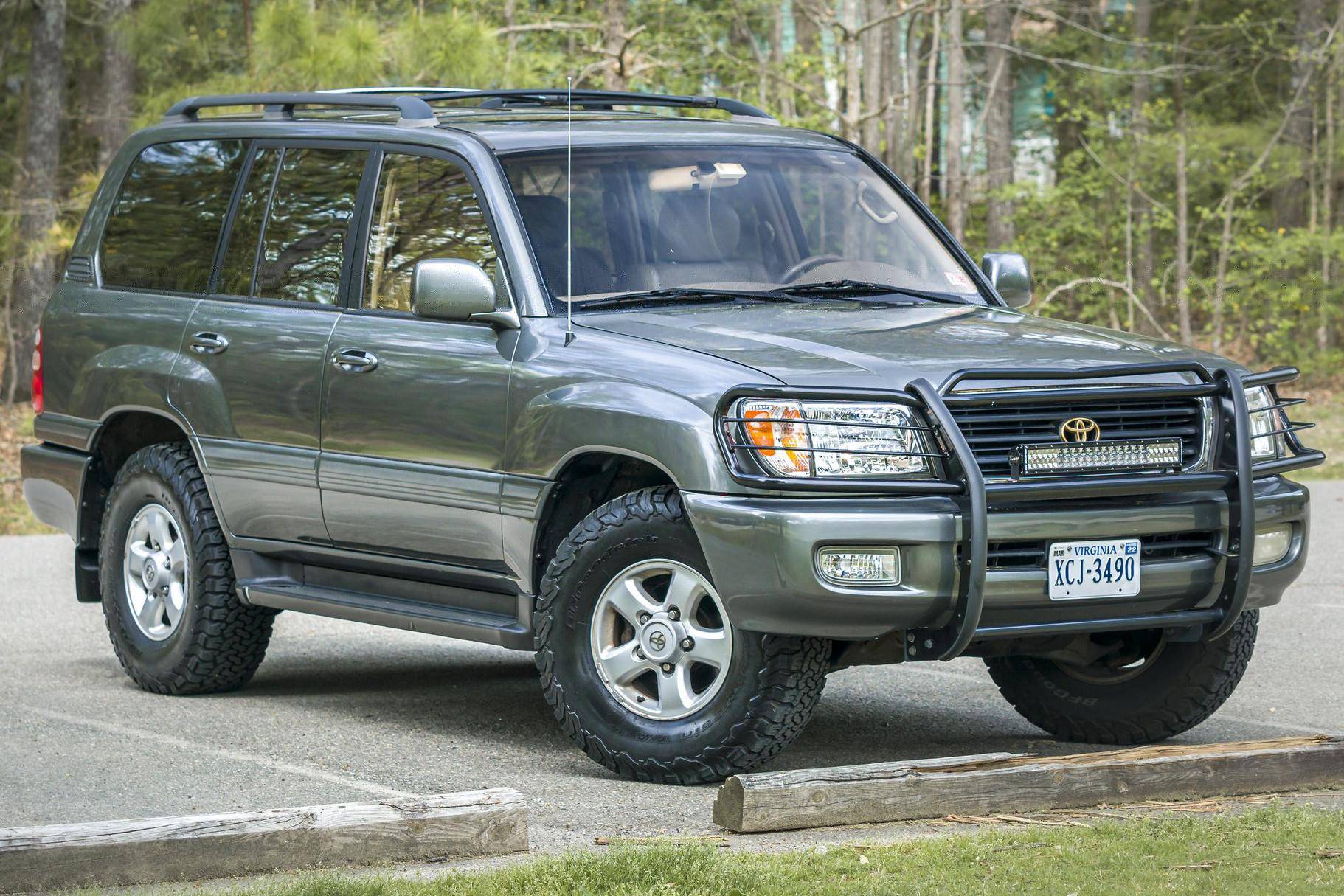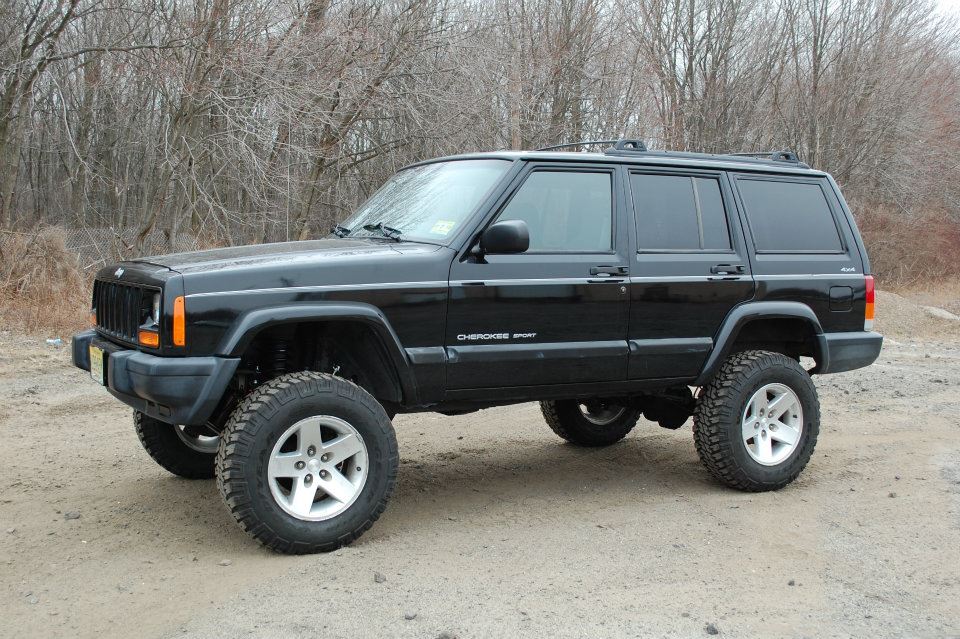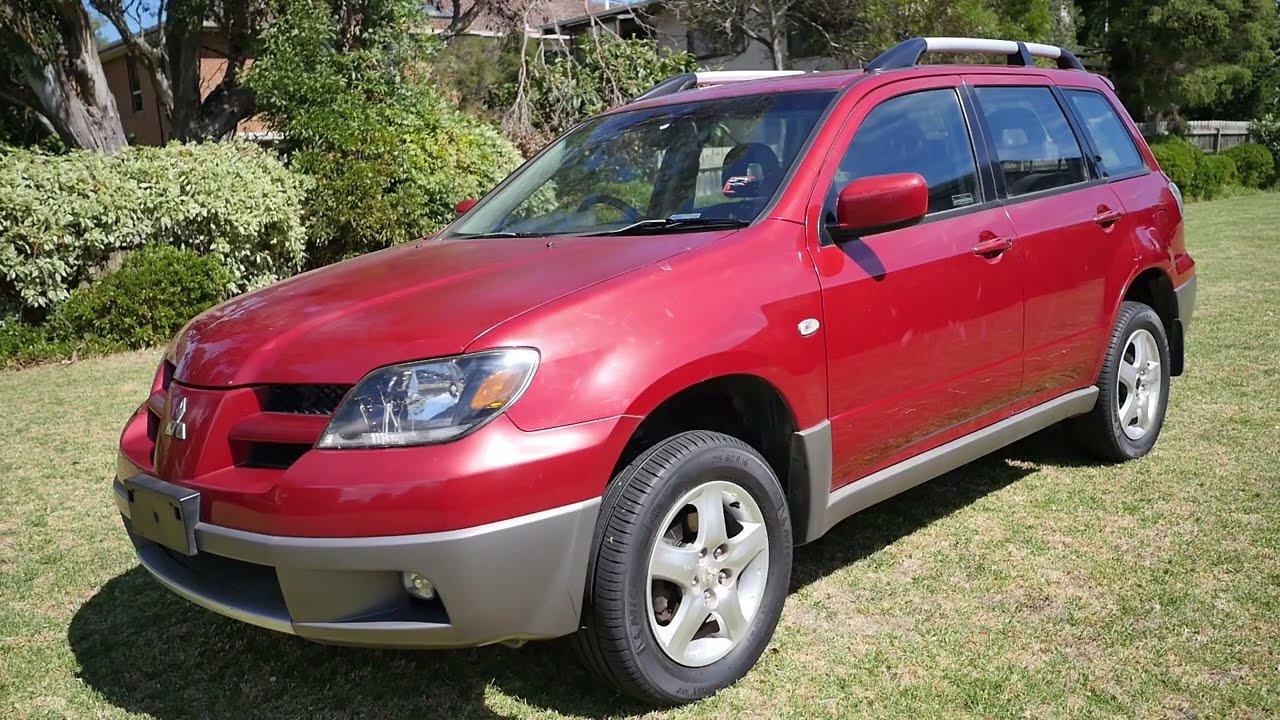When it comes to maintaining clear visibility while driving, few automotive systems are as underappreciated yet crucial as the windshield washer system.
This seemingly simple mechanism, consisting of a reservoir, pump, nozzles, and connecting lines, can make the difference between safe navigation and dangerous blind spots during inclement weather or dusty conditions.
However, not all washer systems are created equal, and the automotive industry has produced both remarkable success stories and frustrating failures over the decades.
The best windshield washer systems share common characteristics: robust pump design, strategically positioned nozzles with optimal spray patterns, corrosion-resistant components, and thoughtful engineering that considers real-world operating conditions.
These systems continue functioning reliably even after years of exposure to extreme temperatures, road salt, and various washer fluid formulations. They maintain consistent pressure, deliver fluid exactly where needed, and resist the accumulation of debris that plagues lesser designs.
Conversely, problematic systems often suffer from fundamental design flaws: poorly positioned nozzles that collect debris, inadequate pump pressure, cheap materials that corrode quickly, and spray patterns that waste fluid while failing to effectively clean the windshield.
Understanding these differences helps drivers make informed decisions about vehicle purchases and maintenance, while providing valuable insights into what makes automotive systems truly reliable versus merely functional.
5 Windshield Washer Systems That Always Work
These thoughtfully engineered systems feature generously sized reservoirs, robust pumps, and intelligently routed lines that deliver consistent spray patterns through years of reliable operation.
Their strategic nozzle placement and anti-clog designs maintain proper coverage across the entire windshield without developing the weak streams or misdirected sprays that plague lesser systems.
From freezing winter conditions to dusty summer driving, these exceptional washer systems continue providing the visibility-critical cleaning performance that modern driving demands without maintenance headaches.
Owners report years of trouble-free operation with these dependable systems—an often-overlooked reliability feature that proves its worth during sudden visibility emergencies when consistent washer function becomes critically important.
1. Mercedes-Benz S-Class (W140 Generation, 1991-1998)
The Mercedes-Benz W140 S-Class represents the pinnacle of over-engineered German automotive excellence, and its windshield washer system exemplifies this philosophy perfectly.
This system was designed with the same meticulous attention to detail that characterized every aspect of these legendary luxury sedans, resulting in a washer system that continues operating flawlessly decades after production ended.
The heart of this system lies in its exceptionally robust Bosch-manufactured pump, which generates significantly higher pressure than contemporary systems while maintaining whisper-quiet operation.
The pump housing is constructed from high-grade aluminum alloy with internal components featuring corrosion-resistant coatings that prevent degradation even when exposed to various washer fluid formulations over extended periods.
The pump’s diaphragm mechanism utilizes premium rubber compounds that remain flexible in extreme cold while resisting chemical breakdown from alcohol-based fluids.
What truly sets the W140 washer system apart is its innovative nozzle design and positioning. Rather than using conventional fixed nozzles, Mercedes engineers developed retractable spray nozzles that pop up from the hood when activated, then retract flush with the surface when not in use.
This design prevents debris accumulation, ice formation, and accidental damage from car washes or maintenance activities. The nozzles themselves feature precision-machined orifices that create an optimal fan-spray pattern, ensuring complete windshield coverage with minimal fluid waste.

The system’s reservoir holds an generous 6.8 liters of washer fluid, constructed from high-density polyethylene with UV-resistant additives to prevent degradation from sunlight exposure.
The filler neck incorporates a sophisticated level sensor that provides accurate fluid level readings to the dashboard warning system, while the cap features a leak-proof seal that maintains system pressure even during extreme temperature fluctuations.
Perhaps most impressively, the W140 washer system includes heated nozzles and lines in cold-weather markets, powered by the engine’s coolant system. This feature ensures reliable operation in sub-freezing temperatures where other systems fail.
The heated components prevent ice formation in the nozzles and maintain fluid flow even when ambient temperatures drop well below the freezing point of standard washer fluid mixtures.
The electrical system supporting the washer pump includes heavy-duty relays and fuses rated well above normal operating requirements, providing excellent reliability margins.
The wiring harness uses automotive-grade copper conductors with multiple layers of insulation and protective jacketing to prevent corrosion and electrical failures.
Even the system’s integration with the vehicle’s computer networks was designed with redundancy, ensuring that electronic malfunctions in other systems cannot disable the washer function.
After three decades, W140 S-Class vehicles with original washer systems continue operating with remarkable consistency, testament to Mercedes-Benz’s commitment to engineering excellence during this era.
2. Toyota Land Cruiser (100 Series, 1998-2007)
Toyota’s 100 Series Land Cruiser earned legendary status for its uncompromising reliability in the world’s harshest environments, from Arctic expeditions to Saharan crossings.
The windshield washer system in these vehicles reflects Toyota’s understanding that every component must function flawlessly regardless of operating conditions, making it one of the most dependable washer systems ever produced.
The system’s exceptional reliability begins with its industrial-grade pump design, manufactured to Toyota’s exacting specifications using a positive-displacement mechanism that maintains consistent pressure across a wide range of operating conditions.
Unlike many automotive washer pumps that rely on centrifugal action, the Land Cruiser’s pump uses a gear-driven design that continues operating effectively even when partially clogged or operating with thickened fluids in extreme cold.
The pump housing is constructed from corrosion-resistant materials with internal seals designed to last the vehicle’s entire service life. Toyota engineers positioned the washer nozzles with particular attention to the Land Cruiser’s intended use in dusty, muddy conditions where visibility can become compromised quickly.
The nozzles are recessed into protective housings that shield them from direct impact while preventing debris accumulation. The spray pattern was optimized through extensive testing in various climates, ensuring effective cleaning action across the entire windshield surface without leaving streaks or blind spots.
The reservoir system demonstrates Toyota’s attention to practical details often overlooked by other manufacturers. The 4.5-liter tank features internal baffles that prevent fluid sloshing during severe off-road driving, while the filler neck incorporates a large opening that accommodates quick refilling even with improvised containers in remote locations.

The reservoir material was selected for its resistance to UV degradation, temperature extremes, and chemical compatibility with various washer fluid formulations available worldwide.
One of the system’s most impressive features is its self-cleaning capability, achieved through strategically designed fluid flow patterns that prevent sediment accumulation in the lines and nozzles.
The pump’s high-pressure output creates sufficient velocity to carry small debris particles through the system rather than allowing them to settle and cause blockages. This characteristic proves invaluable in dusty environments where other systems quickly become clogged.
The electrical components supporting the washer system reflect Toyota’s reputation for electrical reliability. The pump motor features brush designs that resist wear and contamination, while the control circuits include sophisticated protection against voltage spikes and electromagnetic interference.
The system integrates seamlessly with the Land Cruiser’s robust electrical architecture, benefiting from the vehicle’s superior grounding and power distribution systems.
Temperature resilience represents another critical aspect of the Land Cruiser’s washer system performance. Components are rated for operation in temperature ranges from -40°F to 160°F, ensuring functionality in extreme climates where other vehicles become inoperable.
The fluid lines use flexible materials that remain pliable in severe cold while resisting degradation from heat and UV exposure. Field reports from Land Cruiser owners operating in commercial and expedition roles consistently praise the washer system’s reliability, with many vehicles accumulating hundreds of thousands of miles without requiring any washer system maintenance beyond fluid refills.
3. BMW E39 5 Series (1995-2003)
The BMW E39 5 Series represents one of the finest achievements in automotive engineering, combining performance, luxury, and reliability in a package that many enthusiasts consider the pinnacle of the 5 Series lineage.
The windshield washer system in these vehicles exemplifies BMW’s commitment to functional excellence, delivering consistent performance that matches the vehicle’s overall quality standards.
BMW engineers approached the E39’s washer system with their characteristic attention to both performance and longevity. The pump assembly utilizes a twin-chamber design that provides redundancy and ensures consistent pressure delivery even as system components age.
This sophisticated approach contrasts sharply with single-chamber pumps used in most vehicles, providing superior reliability margins that keep the system functioning long after simpler designs would fail.
The nozzle configuration on the E39 represents a masterclass in fluid dynamics engineering. BMW developed a unique four-nozzle arrangement that creates overlapping spray patterns covering the entire windshield surface with remarkable efficiency.
Each nozzle features precision-engineered orifices that generate optimal droplet size and velocity for maximum cleaning effectiveness while minimizing fluid consumption.
The nozzles are positioned to take advantage of aerodynamic forces created by the vehicle’s motion, enhancing spray distribution at highway speeds.
What sets the E39 system apart is its integration with the vehicle’s sophisticated sensor networks. The system includes low-fluid warnings that provide early notification before complete depletion, while temperature sensors monitor conditions to prevent pump damage from frozen fluids.
This electronic integration extends to the system’s interaction with the automatic wipers, creating coordinated cleaning cycles that optimize visibility in various weather conditions.

The reservoir design reflects BMW’s engineering philosophy of over building critical components. The 3.2-liter tank features internal structures that maintain structural integrity under temperature cycling while preventing fluid contamination from external sources.
The filler cap incorporates multiple sealing surfaces that prevent evaporation losses and maintain system pressure, contributing to consistent pump performance over time.
BMW’s attention to component quality becomes evident in the system’s electrical infrastructure. The washer pump motor features permanent magnet construction with precision-balanced armatures that operate smoothly and quietly throughout their service life.
The control circuits include intelligent current monitoring that adjusts pump operation based on system resistance, compensating for factors like fluid viscosity changes or partial blockages.
The fluid distribution network uses high-quality synthetic rubber hoses that resist degradation from ozone, temperature extremes, and chemical exposure.
These lines maintain flexibility and pressure integrity far longer than conventional rubber components, contributing significantly to long-term reliability.
The routing of these lines through the engine bay demonstrates careful engineering to protect them from heat sources and potential damage from maintenance activities.
One particularly impressive aspect of the E39 washer system is its resistance to common failure modes that plague other designs. The pump’s robust construction prevents cavitation damage, while the nozzle design resists clogging from mineral deposits or debris.
The system’s electrical components feature protection against voltage transients and electromagnetic interference, ensuring consistent operation in the complex electrical environment of modern vehicles.
Owner reports consistently highlight the E39 washer system’s reliability, with many vehicles exceeding 200,000 miles without requiring any washer system repairs or component replacements beyond normal maintenance.
4. Honda Accord (Sixth Generation, 1998-2002)
Honda’s sixth-generation Accord achieved remarkable success by combining practical engineering with exceptional reliability, creating a vehicle that satisfied both enthusiasts and practical buyers.
The windshield washer system in these Accords embodies Honda’s philosophy of creating simple, robust solutions that function reliably for the vehicle’s entire service life while remaining cost-effective to manufacture and maintain.
The foundation of the Accord’s washer system reliability lies in Honda’s mastery of pump design optimization. Rather than pursuing complex multi-chamber arrangements or exotic materials, Honda engineers focused on perfecting a single-chamber centrifugal pump design that balances performance, durability, and cost.
The pump housing uses a high-strength polymer composite that resists corrosion while providing excellent dimensional stability across temperature ranges. Internal components feature precision tolerances that maintain efficiency while accommodating normal wear patterns without performance degradation.
Honda’s approach to nozzle positioning and spray pattern development demonstrates its deep understanding of real-world operating conditions.
The dual-nozzle configuration creates intersecting spray patterns that provide complete windshield coverage while accounting for variations in fluid pressure and ambient conditions.
The nozzles themselves feature self-cleaning designs that use fluid velocity to prevent debris accumulation, while their positioning protects them from direct impact damage during normal vehicle operation.
The reservoir system reflects Honda’s commitment to practical durability. The 2.8-liter tank utilizes blow-molded construction with uniform wall thickness that prevents stress concentration points while maintaining structural integrity under temperature cycling.
The internal surfaces feature smooth finishes that resist contamination buildup, while the external design includes mounting points that isolate the reservoir from engine vibrations that could cause fatigue failures over time.

One of the most impressive aspects of the Accord’s washer system is its tolerance for maintenance neglect. The pump design incorporates features that allow it to continue operating effectively even when fluid levels drop low or when using suboptimal washer fluid formulations.
The system’s ability to self-prime after running dry sets it apart from many contemporary designs that require manual intervention or component replacement after such events.
Honda’s electrical system integration demonstrates their systematic approach to automotive reliability. The washer pump motor features brush assemblies designed for extended service life, while the control circuits include protection against common electrical faults.
The wiring harness uses automotive-grade components with multiple layers of protection against environmental contamination and mechanical damage.
The system’s cold-weather performance deserves particular recognition, as Honda engineers optimized component selection and fluid flow characteristics to maintain functionality in sub-freezing conditions.
The pump housing design prevents ice formation in critical areas, while the nozzle configuration resists freeze-clogging that disables other systems in winter conditions.
Quality control measures during manufacturing ensure consistent performance across the production run. Honda’s supplier qualification processes and incoming inspection procedures prevent defective components from entering the assembly line, while statistical process control monitors critical dimensions and performance parameters throughout production.
Field reliability data from the sixth-generation Accord consistently shows exceptionally low washer system failure rates, with most vehicles reaching end-of-life without requiring any washer system repairs.
This reliability record contributed significantly to Honda’s reputation for practical, dependable transportation that serves owners faithfully for decades.
Also Read: 5 Factory Shocks That Last 100K+ And 5 That Fail Under Warranty
5. Jeep Cherokee XJ (1984-2001)
The Jeep Cherokee XJ earned legendary status among off-road enthusiasts and practical drivers alike, combining rugged capability with surprising on-road refinement throughout its remarkably long production run.
The windshield washer system in these vehicles reflects Chrysler’s understanding that every component must function reliably in harsh conditions, resulting in a design that continues operating effectively long after other systems would fail.
The Cherokee’s washer system reliability stems from its fundamentally robust design philosophy that prioritizes function over complexity. The pump assembly uses a simple yet effective motor-driven impeller design that generates adequate pressure while tolerating the debris and contamination commonly encountered in off-road environments.
The pump housing construction utilizes heavy-duty materials that resist impact damage and corrosion, while internal seals maintain integrity even when exposed to temperature extremes and various fluid formulations.
Chrysler engineers positioned the washer nozzles with particular attention to the Cherokee’s intended use in dusty, muddy conditions where windshield contamination occurs frequently and suddenly.
The nozzle placement creates spray patterns that clear debris effectively while providing coverage across the entire windshield surface. The nozzles themselves feature larger orifices than typical passenger car applications, reducing clogging susceptibility while maintaining adequate spray velocity for effective cleaning.
The reservoir design demonstrates practical engineering focused on real-world utility. The 3.0-liter capacity provides adequate reserve for extended off-road excursions, while the tank construction uses materials selected for durability rather than weight optimization.
The filler neck incorporates a large opening that accommodates refilling from various container types, recognizing that Cherokee owners often operate in remote areas where conventional service facilities are unavailable.

One of the Cherokee’s most valuable washer system characteristics is its tolerance for abuse and neglect. The pump design allows operation with various fluid types, from plain water to concentrated commercial formulations, without damage or performance degradation.
This flexibility proves invaluable for owners who use their vehicles in diverse environments where optimal washer fluid may not be readily available.
The electrical components supporting the washer system reflect Chrysler’s experience with harsh-duty applications. The pump motor features robust brush assemblies that resist wear from contamination and electrical transients, while the control circuits include protection against common failure modes.
The wiring harnesses use heavy-duty insulation and routing that protects against damage from engine bay heat, road debris, and maintenance activities.
Cold weather performance represents another strength of the Cherokee washer system. Components are designed to function in severe winter conditions, with the pump assembly resistant to freeze damage and nozzles that clear quickly when temperatures warm.
The system’s ability to operate with partially frozen fluids sets it apart from more sensitive designs that become completely inoperable in cold conditions.
The Cherokee’s washer system also demonstrates excellent longevity characteristics, with many vehicles accumulating extreme mileage without requiring washer system maintenance beyond fluid refills.
This reliability stems from conservative design margins that account for harsh operating conditions and component aging over extended service periods.
Serviceability represents a final advantage of the Cherokee washer system design. Components are accessible for maintenance and replacement without extensive disassembly, while parts availability remains excellent even decades after production ended.
This practical approach to system design ensures that Cherokee owners can maintain their vehicles economically throughout their extended service lives.
The Chronic Cloggers: 5 Windshield Washer Systems That Clog Instantly
These frustrating systems develop blockages within months of normal use, often beginning with weak spray patterns before progressing to complete nozzle failure that leaves drivers with dangerously reduced visibility.
Their poorly designed nozzles and inadequate line routing create perfect conditions for debris accumulation and mineral buildup, particularly in areas with hard water or dusty environments.
Owners report the anxiety-inducing experience of discovering inoperative washers during critical moments like encountering mud spray or bird strikes when clear vision becomes essential for safety.
What should be a simple, reliable system instead becomes a recurring maintenance frustration, with many drivers resorting to manual cleaning methods or expensive dealership service calls just to restore basic washer functionality.
1. Chrysler PT Cruiser (2001-2010)
The Chrysler PT Cruiser achieved initial success through its distinctive retro styling and practical packaging, but beneath its appealing exterior lay numerous engineering compromises that prioritized cost reduction over long-term reliability.
The windshield washer system exemplifies these shortcomings, featuring a design so fundamentally flawed that clogging issues begin appearing within months of ownership and persist throughout the vehicle’s service life.
The primary failure point in the PT Cruiser’s washer system stems from its poorly conceived nozzle design and positioning. Chrysler engineers positioned the spray nozzles directly in the airflow path where they collect debris, insects, and road grime at an alarming rate.
The nozzles themselves feature undersized orifices that clog easily when even microscopic particles enter the system, while their positioning on the hood surface makes them vulnerable to damage from car washes, maintenance activities, and environmental contamination.
The spray pattern created by these nozzles proves inadequate even when functioning properly, leaving significant portions of the windshield uncleaned while wasting fluid on areas outside the driver’s field of vision.
The pump assembly represents another critical weakness in the PT Cruiser’s washer system design. Chrysler selected a low-cost centrifugal pump that generates insufficient pressure to clear debris from the nozzles once clogging begins.

This inadequate pressure also prevents the system from creating the high-velocity spray necessary for effective windshield cleaning, resulting in poor performance even when the system functions nominally.
The pump housing uses cheap plastic materials that become brittle with age and temperature cycling, leading to internal failures that cannot be economically repaired.
Reservoir design further compounds the PT Cruiser’s washer system problems. The undersized 1.8-liter tank requires frequent refilling, while its internal configuration promotes sediment accumulation that eventually clogs the system.
The reservoir’s mounting location subjects it to excessive heat from the engine bay, causing premature degradation of plastic components and accelerating fluid evaporation.
The filler neck design allows contamination to enter the system during refilling, while the cap seal frequently fails, allowing debris and moisture to enter the reservoir.
The fluid distribution system in the PT Cruiser uses the cheapest possible components, with rubber hoses that quickly develop internal deposits and restrictions.
These hoses are routed through areas where they experience temperature extremes and mechanical stress that cause premature failure. The internal diameter of these lines is inadequate for the system’s flow requirements, creating pressure drops that reduce nozzle performance even when other components function properly.
The PT Cruiser’s washer system failures illustrate the consequences of prioritizing initial cost over long-term reliability, creating a maintenance nightmare that frustrates owners and demonstrates the importance of proper engineering in even the simplest automotive systems.
2. Volkswagen New Beetle (1998-2010)
Volkswagen’s New Beetle captured consumer imagination with its distinctive styling that evoked the original Beetle’s charm while incorporating modern safety and convenience features.
However, beneath its appealing exterior lay numerous engineering compromises that reflected Volkswagen’s cost-cutting measures during this era, particularly evident in the chronically problematic windshield washer system that plagued owners throughout the vehicle’s production run.
The New Beetle’s washer system problems begin with its fundamentally flawed nozzle design that prioritizes aesthetic integration over functional performance.
Volkswagen engineers embedded the spray nozzles flush with the hood surface in a misguided attempt to maintain clean styling lines, creating recessed pockets that collect debris, leaves, and road grime like miniature trash receptacles.
These recessed nozzles feature intricate internal passages with multiple direction changes that promote particle accumulation and virtually guarantee clogging within weeks of normal driving.
The nozzle orifices themselves represent a masterclass in poor engineering, featuring impossibly small openings that clog when exposed to even the finest particles found in typical washer fluids.
The precision required to manufacture these tiny orifices consistently proves beyond Volkswagen’s quality control capabilities during this period, resulting in new vehicles leaving the factory with partially blocked nozzles that only worsen with use.
The spray pattern created by these nozzles, when functioning at all, proves woefully inadequate for effective windshield cleaning, leaving large areas untreated while creating annoying streaks across the driver’s vision.
Volkswagen’s pump selection for the New Beetle demonstrates their commitment to cost reduction over performance, utilizing an undersized motor that generates barely adequate pressure when new and insufficient pressure once any system resistance develops.
This weak pump cannot clear minor blockages that more robust designs handle effortlessly, leading to progressive system degradation that requires professional intervention to restore even marginal functionality.
The pump housing construction uses materials that deteriorate rapidly when exposed to various washer fluid formulations, particularly those containing methanol or other alcohol-based antifreeze compounds.

The reservoir design reveals additional engineering compromises that compound the system’s reliability problems. The tank’s internal configuration creates dead zones where sediment accumulates, while its external mounting subjects it to excessive vibration that accelerates component fatigue.
The reservoir’s small capacity requires frequent refilling, increasing opportunities for contamination to enter the system during maintenance. The filler neck design allows debris to fall directly into the tank during refilling, while the cap seal frequently fails due to cheap materials and poor manufacturing tolerances.
Fluid distribution throughout the New Beetle’s washer system uses components selected purely on cost criteria rather than performance requirements.
The connecting hoses feature internal diameters that create excessive pressure drops, while their routing exposes them to heat sources that cause premature degradation.
These hoses develop internal deposits quickly, particularly when using fluids containing detergents or other additives designed to improve cleaning performance.
The electrical system supporting the New Beetle’s washer pump reflects Volkswagen’s broader electrical reliability problems during this era. The motor features inadequate power output for the system’s requirements, while the control circuits lack proper protection against voltage spikes and electromagnetic interference common in the vehicle’s complex electrical environment.
The wiring harness uses substandard materials that corrode quickly when exposed to moisture, creating intermittent electrical faults that prove difficult to diagnose and expensive to repair.
Temperature sensitivity represents another significant weakness in the New Beetle’s washer system design. The recessed nozzles collect water that freezes solid in cold weather, creating ice plugs that prevent operation even after temperatures rise above freezing.
The cheap plastic components become brittle in cold conditions, cracking easily and allowing air leaks that prevent proper system pressurization. Service records and owner reports document consistent patterns of New Beetle washer system failures, with most vehicles requiring multiple component replacements and system cleanings throughout their service lives.
Many owners report spending more on washer system repairs than on major mechanical components, while others simply abandon attempts to maintain system functionality.
The New Beetle’s washer system problems became so notorious that aftermarket companies developed complete replacement systems to address the original design’s shortcomings.
3. Saturn Ion (2003-2007)
General Motors’ Saturn Ion represented an ambitious attempt to create an affordable, efficient compact car that could compete with Japanese imports while showcasing innovative manufacturing techniques and materials.
However, the Ion’s development suffered from typical GM cost-cutting measures and rushed engineering timelines that resulted in numerous quality problems, with the windshield washer system serving as a prime example of how poor design decisions create long-term reliability nightmares.
The Ion’s washer system failures begin with its catastrophically bad nozzle design that appears to have been engineered specifically to collect and retain debris. The spray nozzles feature complex internal geometries with sharp corners and narrow passages that create turbulence and low-velocity zones where particles settle and accumulate.
These design flaws ensure that even clean washer fluid becomes contaminated as it passes through the nozzles, gradually building up deposits that reduce flow and eventually cause complete blockage.
The nozzle positioning compounds these problems by placing the spray outlets directly in the path of airborne debris and road spray. The nozzles sit in exposed locations where they collect insects, pollen, dust, and other contaminants that quickly clog the already-problematic orifices.
The mounting design does not protect from impact damage during car washes or maintenance activities, leading to frequent nozzle damage that requires expensive replacement with equally flawed components.
Saturn’s pump selection for the Ion demonstrates the consequences of prioritizing initial cost over long-term reliability. The chosen pump generates barely adequate pressure when new and completely inadequate pressure once any system resistance develops from normal contamination.
This weak pump cannot overcome the restriction created by partially clogged nozzles, leading to a rapid decline in system performance that culminates in complete failure within months of normal operation.

The pump housing construction uses materials that prove incompatible with common washer fluid formulations, particularly those containing alcohol-based antifreeze compounds.
These materials degrade rapidly, creating internal contamination that accelerates system clogging while reducing pump efficiency. The pump’s internal seals fail frequently due to cheap materials and poor manufacturing quality, allowing air leaks that prevent proper system pressurization.
Reservoir design represents another area where Saturn’s cost-cutting measures created long-term problems. The tank’s internal configuration promotes sediment accumulation in areas that cannot be cleaned without complete system disassembly, while its mounting location subjects it to excessive heat and vibration that accelerate component degradation.
The reservoir uses materials that become brittle with age and temperature cycling, leading to crack formation that allows contamination to enter the system.
The fluid distribution network throughout the Ion uses the cheapest possible components, with hoses that develop internal restrictions quickly when exposed to normal washer fluid additives.
These hoses are routed through areas where they experience temperature extremes and mechanical stress that cause premature failure. The internal surface finish of these lines promotes deposit formation, while their small diameter creates pressure drops that reduce system performance even when other components function properly.
Service records document consistent patterns of Ion washer system failures across all model years, with many vehicles requiring complete system replacement multiple times throughout their service lives.
The frequency and cost of these repairs often exceed the vehicle’s remaining value, leading many owners to abandon washer system maintenance entirely.
Saturn dealerships reported that washer system repairs represented one of their most common service items, while parts availability became problematic as Saturn’s dealer network collapsed.
4. Dodge Caliber (2007-2012)
The Dodge Caliber emerged during Chrysler’s troubled period following its merger with Daimler, representing an attempt to create a competitive compact car while managing severe cost constraints and development timeline pressures.
The resulting vehicle suffered from numerous quality problems that reflected these constraints, with the windshield washer system serving as a particularly egregious example of how corner-cutting in design and manufacturing creates persistent reliability problems that frustrate owners throughout the vehicle’s service life.
The Caliber’s washer system problems stem from a fundamentally flawed nozzle design that appears to have been engineered without consideration for real-world operating conditions.
The spray nozzles feature microscopic orifices that clog instantly when exposed to even the finest particles commonly found in washer fluids, while their internal passages create turbulent flow patterns that promote particle deposition and blockage formation.
These nozzles are positioned in exposed locations where they collect debris, pollen, and insects that guarantee rapid clogging under normal driving conditions.
The nozzle mounting system compounds these problems by creating water traps that freeze solid in cold weather, preventing operation even after temperatures rise above freezing.
The cheap plastic materials used in nozzle construction become brittle quickly, cracking easily and creating air leaks that prevent proper system pressurization.

The spray pattern created by these nozzles, when functioning at all, proves completely inadequate for effective windshield cleaning, leaving large areas untreated while wasting fluid on non-critical surfaces.
Chrysler’s pump selection for the Caliber demonstrates its commitment to cost reduction over functionality, utilizing a motor that generates insufficient pressure to overcome even minor system restrictions.
This inadequate pump cannot clear debris from clogged nozzles or maintain consistent performance as normal wear occurs, leading to progressive system degradation that requires frequent professional service to maintain minimal functionality.
The pump housing uses materials that deteriorate rapidly when exposed to alcohol-based washer fluids, creating internal contamination that accelerates system failure.
Quality control problems during manufacturing ensure that many Caliber vehicles leave the factory with partially functional washer systems that deteriorate rapidly under normal use.
Service records document consistent patterns of early failure across all model years, with most vehicles requiring multiple component replacements and complete system cleanings within the first few years of ownership.
The frequency and cost of these repairs often approach the vehicle’s depreciated value, leading many owners to simply abandon washer system maintenance entirely.
5. Mitsubishi Outlander (2003-2013)
The Mitsubishi Outlander represented the company’s attempt to establish a foothold in the competitive compact SUV market during a period when Mitsubishi struggled with financial difficulties and declining market share.
The development constraints imposed by these circumstances resulted in numerous quality compromises throughout the vehicle, with the windshield washer system serving as a prime example of how inadequate engineering resources and cost-cutting measures create products that fail consistently and frustrate owners throughout their service lives.
The Outlander’s washer system problems begin with a nozzle design that demonstrates complete disregard for basic fluid dynamics principles and real-world operating conditions.
The spray nozzles feature impossibly complex internal passages filled with sharp corners, sudden direction changes, and flow restrictions that create turbulence and promote particle deposition.
These design flaws ensure that even clean washer fluid becomes contaminated as it passes through the nozzles, gradually building up deposits that reduce flow and eventually cause complete blockage within weeks of normal operation.
The nozzle positioning compounds these fundamental design problems by placing the spray outlets in locations where they collect maximum amounts of debris, insects, and road contamination.
The mounting design provides no protection from environmental contamination or impact damage, while the spray pattern created by these nozzles proves completely inadequate for effective windshield cleaning even when functioning properly.
Large areas of the windshield remain untreated while fluid is wasted on surfaces outside the driver’s field of vision. Mitsubishi’s pump selection for the Outlander reflects their financial constraints and engineering limitations, utilizing a motor that generates barely adequate pressure when new and insufficient pressure once any system resistance develops.
This weak pump cannot overcome minor blockages that more robust designs handle effortlessly, leading to rapid system degradation that requires professional intervention to restore even marginal functionality.

The pump housing construction uses materials that prove incompatible with common washer fluid formulations, particularly those containing alcohol-based antifreeze compounds that cause rapid internal degradation.
The electrical system supporting the washer pump demonstrates Mitsubishi’s broader electrical engineering problems during this period. The motor features inadequate power output for the system’s requirements, while the control circuits lack proper protection against voltage spikes and electromagnetic interference.
The wiring harness uses substandard materials that corrode quickly when exposed to moisture, creating intermittent electrical faults that prove expensive to diagnose and repair. These electrical problems often manifest as complete system failures that appear suddenly without warning.
Reservoir design reveals additional areas where cost-cutting measures compromise functionality and reliability. The tank’s internal configuration creates multiple dead zones where sediment accumulates and cannot be removed without complete system disassembly, while its mounting location subjects it to excessive heat and vibration that accelerate component degradation.
The reservoir uses materials that become brittle with age, developing cracks that allow contamination to enter the system while permitting fluid leakage that creates safety hazards.
The fluid distribution network uses components selected purely on cost criteria rather than performance requirements. The connecting hoses feature internal diameters that create excessive pressure drops throughout the system, while their routing exposes them to temperature extremes and mechanical stress that cause premature failure.
These hoses develop internal deposits quickly, particularly when using fluids containing detergents or other performance additives, creating restrictions that reduce system effectiveness even further.
Temperature sensitivity represents a particularly frustrating aspect of the Outlander’s washer system design, as the system becomes completely inoperable in cold weather despite the vehicle’s intended use in climates where winter driving conditions make windshield cleaning critical.
The nozzles freeze solid in even mild winter conditions, while the cheap plastic components crack easily when subjected to thermal cycling. The system’s inability to function when needed most eliminates its utility and creates dangerous driving conditions.
Outlander vehicles leave the factory with washer systems that function marginally at best and deteriorate rapidly under normal operating conditions.
The assembly process fails to identify components that are already partially blocked or damaged, while inadequate testing procedures allow defective systems to reach customers who discover the problems only after purchase.
Service records and owner reports document consistent patterns of Outlander washer system failures across all model years and trim levels, with most vehicles requiring multiple component replacements, complete system cleanings, and extensive troubleshooting throughout their service lives.
Many owners report that washer system repairs consume more time and money than major mechanical components, while others simply abandon attempts to maintain system functionality due to the frequency and cost of required interventions.
Also Read: 5 Rear Differentials That Need Zero Service And 5 That Eat Fluid Quickly

